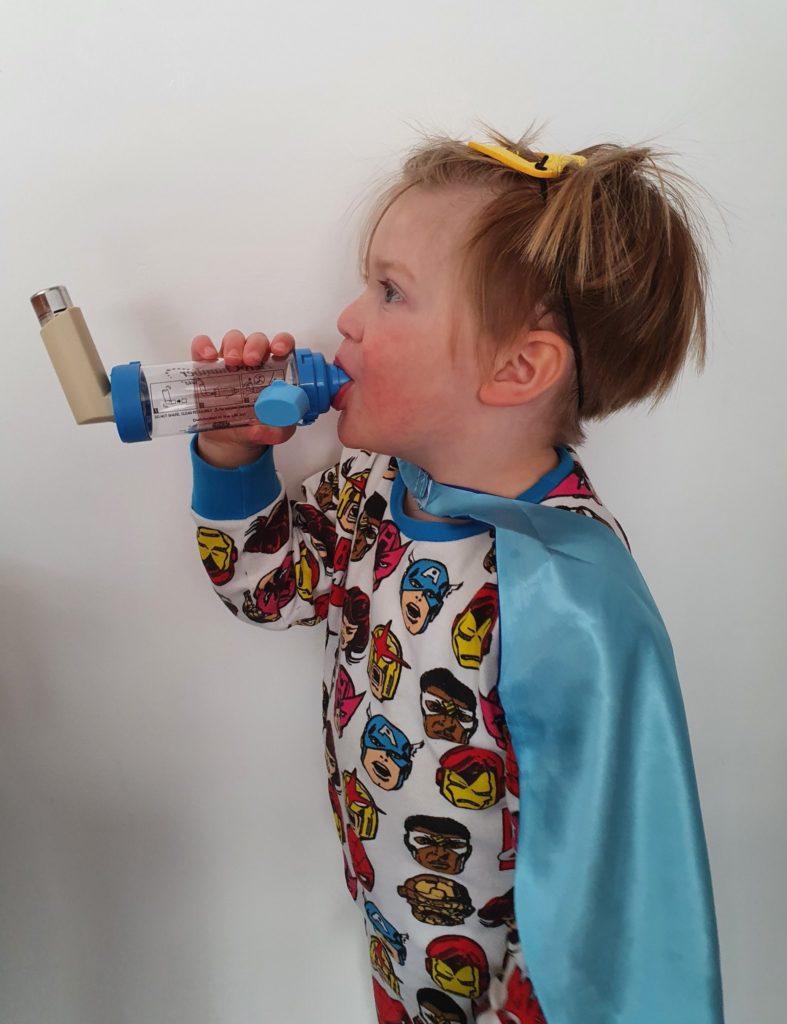By Sara Nelson RGN, BSc (Hons), MSc, Queens Nurse, Programme Lead, Children and Young People’s Transformation Programme NHS England (London Region) and Viv Marsh RGN, RSCN, BSc (Hons), Queen’s Nurse, Clinical Lead for CYP Asthma Transformation for the Black Country Integrated Care Board
The importance of every child and young person with asthma being able to use their inhalers effectively is one of the four key pillars of the #AskAboutAsthma campaign and it is vital to share this message as widely as possible.
Last year saw the launch of our #RightInhalerImage campaign. The campaign evolved from our frustration about the poor images published by mainstream and medical media portraying incorrect/inappropriate inhaler use. Such images continually convey and reinforce poor health messages to people with asthma or other respiratory disease, and to health professionals who are not experienced in respiratory care.
Images illustrating incorrect inhaler use could negatively impact asthma control, leading to poor quality of life and potentially causing asthma attacks.
Our frustration was shared by a number of leading clinicians across the UK and we convened a group of expert respiratory healthcare professionals and patient representatives to unite and address their concerns with the aim of improving the quality of inhaler images. We believe our campaign will improve information for patients, healthcare professionals and the public about the correct use of inhalers.
Aims of the campaign
The #RightInhalerImage Campaign tackles two key issues:
- We often see images of blue inhalers (rescue/reliever medication) being used, rather than brown or other colours (preventer medication), which provide the medication needed to actually treat and control asthma. There is good evidence that overuse of, or over-reliance on, blue inhalers is harmful; it is linked with increased risk of asthma attacks and was identified as a key theme associated with avoidable asthma deaths in the National Review of Asthma Deaths (2014).
Use of rescue medication (blue inhalers) should not be normalised. Asthma is uncontrolled if rescue medication is regularly needed more than twice a week. This should never be ignored; it is an alarm bell that a medical review is needed.
- Inhalers are not always easy to use, and correct technique is important to ensure the medicine is deposited in the lungs where it is needed. There are many different types of inhaler device and the technique needed to use each one differs. Most children and many young people and adults use pressurised Metered Dose Inhalers (pMDIs) but these are quite difficult to use correctly on their own. Spacer devices make pMDIs much easier to use and help the medicine to reach the lungs effectively. We often see images of children using inhalers that, in real life, they would not be able to use correctly. For example, images of children using pMDIs without a spacer or using a type of inhaler only suitable for adolescents or adults.
Our aims are simple: inhaler images need to support high quality healthcare messages. Images should show preventer inhalers being used and the inhaler types should be appropriate for the person in the image. Spacer use should be normalised for everyone who uses a pMDI to treat their asthma or other respiratory disease.
Where are we now
Our campaign kickstarted the development of a social movement for change, helping to build a foundation of awareness and information to pave the way for improved respiratory care in the UK and beyond.
The campaign hashtag is widely known amongst respiratory interested social media users and continues to be used to highlight good inhaler images or to call for poor inhaler images to be removed or changed.
Our abstract about the campaign won the most patient-centred abstract at the 2021 Primary Care Respiratory Society (PCRS) conference
Our resources are still available and we have joined forces with the International Primary Care Respiratory Group (IPCRG) who are continuing to take this project forward with the development and provision of an image library. The IPCRG is a brilliant organisation working to improve respiratory care in many countries around the world and the image library fits well with their Asthma Right Care programme.
We handed over our campaign to the IPCRG at their conference in Malaga in May 2022 where we also presented our poster ‘From kick-start to full steam ahead for the #RightInhalerImage Campaign’. We are grateful to the IPCRG for taking this important work forward and for continuing to grow the image library with a wide range of inhaler images that illustrate inhalers being used correctly by a wide variety of people in many different settings. The stewardship of the IPCRG is an opportunity to work internationally, increasing both the reach of the campaign and the number and type of images included within the library.
Conclusion
Whilst our campaign has had a positive impact and will continue to do so into the future, many children and young people are still living with poor asthma control which affects their quality of life and puts them at risk of asthma attacks. We need to continue to put in place a legacy for the children and young people all over the UK who have succumbed to the disease and take action to prevent future deaths. There are a number of actions that we can take as a health and social care system to make improvements in the way that children and young people with asthma are cared for, the simplest of which is to keep raising awareness.
Please do share the message about using the right inhaler image, depicting the right person, right preventative treatment, in the right way, with the right technique, at the right time, in the right place.
@SaranelsonRGN
@vivmarsh
Additional references
Nelson S, (2021) Let’s improve media portrayal of inhalers Journal of Community Nursing June p12-13
Guilmant-Farry, Nelson S (2021) Asthma’s image problem. Community Practitioner Vol 94 | No 03 May/June 26-27
Visit the #AskAboutAsthma 2022 campaign page for more content.

